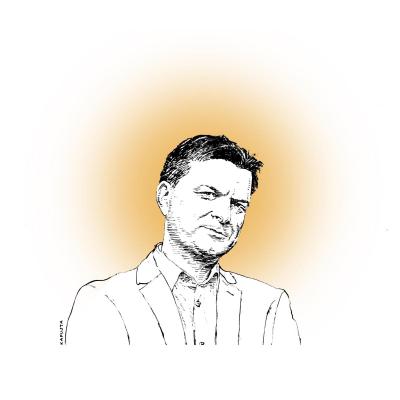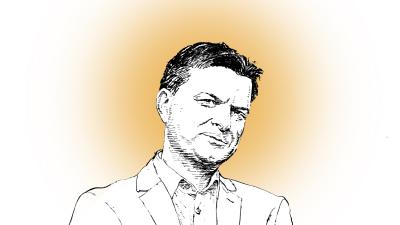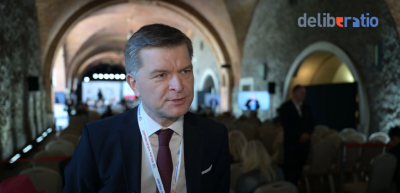Utopian social engineering programmes tend to use young people as the vanguard of change. Students prove to be particularly susceptible to succumbing to ideologies. The banners change, but the mechanism remains the same.
There are events that bring broader social processes into focus as if through a lens. An example is an event in 2020 at the University of Silesia, where sociologist Professor Ewa Budzyńska taught a class entitled “Intergenerational ties in global families”. The university lecturer with 28 years of experience defined the family as a social cell “composed of husband, wife, father, mother, children, relatives, affinities”. She also said that a child in the womb is a human being. These statements were opposed by a group of students who issued a complaint to the university authorities. They accused the researcher of “promoting anti-choice views, homophobic views, anti-Semitism, religious discrimination, information incompatible with modern scientific knowledge and radical Catholic views”.
The students’ position was supported by the university’s disciplinary ombudsman, Prof. Wojciech Popiołek, who announced that consequences would be drawn against Prof. Budzyńska and that she would be punished. In his statement, he wrote: “The infliction of a reprimand on the defendant will constitute an adequate punishment for the act of the defendant and will also be an expression of general and specific prevention. The kind of behaviour attributed to the defendant must not occur in an academic environment”. It is difficult to perceive this message otherwise than as a signal sent to other lecturers not to dare to present similar views, or they will face punishment. Under pressure, Prof. Budzyńska decided to leave the university.
The world’s most youthful party
Let us look at the component parts of this event as they form a pattern. Here, students write a denunciation against an academic professor for the views he expresses. They accuse him of expressing judgements that hurt other people, e.g. homosexuals, taking the side of the victims themselves. They accuse the lecturer of preaching unscientific views, taking the side of science themselves. They are the ones who represent knowledge and progress in contrast to him, who is the bearer of an outdated, intolerant, and rejectable worldview. The students do not even enter into an argumentative discussion with him, demanding that the professor be punished, which ends with his departure from the university.
The same pattern was repeated many times in the 20th century in different times and places. It is illustrative of a broader phenomenon, namely the use of youth as a battering ram of revolution. The vanguard of this process was primarily students, who began by denouncing their lecturers and preventing them from giving lectures.
We do not have statistical data on what percentage of German youth voted for the National Socialists during the elections and referendums of 1932, 1933 and 1934, as no such surveys were conducted at the time. However, we have personal data from the NSDAP’s files, which show that during this period, the average age of Adolf Hitler’s group members was only 29. It was probably the most youthful party in the world in terms of age.
In his “Social History of the Third Reich”, Richard Grunberger writes that young people were, for Nazism, “the social group most amenable to its intentions” and yet “able to pay with loyalty to the point of self-sacrifice”. They were attracted to the “brown revolution”, which promised to build a new world. The young were the vanguard of progress, to whom the Führer promised a civilisational leap forward. Hitler did not want to create a society along the lines of the Middle Ages but a modern, smoothly functioning, high-tech state whose hallmarks were Volkswagens, Messerschmitts, motorways or Siemens turbines. In the following years, the enthusiasm of the youth for Nazism did not diminish at all. Enthusiasm for the accelerated modernisation, industrialisation and urbanisation of the country prevailed.
Coryphaei of science and champions of progress
From the very beginning, the NSADP enjoyed particular sympathy among students. In 1931, the National Socialists were supported by 60 per cent of German students, compared to around 30 per cent of the population as a whole. It was the universities that were the first arenas for the boycotts and anti-Semitic pogroms that later spread throughout the country. Often there were cases of students denouncing their professors for preaching views that were unscientific and deserving of condemnation. When staff purges later took place, it was the lecturers denounced by their students who were the first to lose their jobs.
Characteristically, the young delators emphasised that they were speaking on behalf of the victims, and for them the greatest victim was the German people, wronged by the humiliating Treaty of Versailles, the unjust war reparations, the loss of territories, the bloodthirsty plutocracy, or the behind-the-scenes activities of the Jews. In their view, this hard-pressed nation was further weakened by the unscientific views, opinions, and ideas of suspicious exponents, which had to be combated.
The juvenile informers confidently maintained that they were on the side of science. They believed that their claims about the superiority of the Aryan race were not based on any prejudice at all, but on irrefutably proven knowledge. They would have been outraged if they had been told that racism was an ideology and not science. Behind them stood the authority of a whole galaxy of famous professors from Germany’s most prestigious universities, who claimed that the science of race was based on biology, genetics, medicine, anthropology, and hygiene. Anyone who claimed otherwise was an obscurantist, rejecting modern scientific knowledge.
On the margins of a discussion about eugenics, which paved the way for genocide in the Third Reich, contemporary German historian Joachim Radkau writes: “But was not the ideological core of Nazism, the phantom of refining the Aryan race, extremely unscientific, even anti-scientific? However, we should not start from what we mean by science and scientism today. Eugenics, the science of improving the human genotype, enjoyed a high scientific reputation in the 1920s. And not only in Germany, but in many countries, and by no means only among supporters of the extreme right, but partly even on the political left. Nazi ideology apparently lay much further along the line of what was once considered scientific progress than was wanted to be acknowledged after 1945.”
This is confirmed by another Nazism scholar Rainer Zitelmann, who writes: “One of the constitutive elements of National Socialist ideology was Social Darwinism, understood as the consequent transfer of scientific (biological) knowledge to society”. In his view, the idea of creating a perfect human race based on the Nordic genotype had many supporters among respectable scientists, moralists, philanthropists, and socialists: “The ideas of 'breeding' pushed by representatives of racial hygiene were marked by an optimism growing out of a belief in progress. According to them, the progress of human phylogeny depended on society’s adoption of the principle of selection. Their ideas about the 'health of the nation' coincided with trends in medicine and psychiatry already outlined long before the rise of the Third Reich.”
For the Nazi students, these views were so self-evident that they did not even see the need to discuss them with lecturers who presented a different position. Instead of debating the arguments, they demanded the punishment of iniquitous professors. Interestingly, in the case of eugenics, the main opponents of the proponents of racial hygiene were not at all left-wing and liberal humanitarians, who also positioned themselves in the “progress camp”, but the backward followers of Christian ethics, insisting on the sanctity and inviolability of human life.
For the sake of women and health
The support for National Socialism among the youngest age group also stemmed from the cult of youth, physical fitness, and health spread by the Nazis. The Nazi state was the first in the world to start promoting healthy food and fighting nicotine. It was German researchers in the 1930s who first proved the harmfulness of tobacco. This triggered major social anti-smoking campaigns - smoking was banned in many public places, tobacco advertising was severely restricted, and a campaign to make people aware of the negative effects of nicotine was launched. The example was set by Adolf Hitler himself, who did not smoke cigarettes, did not drink alcohol and was a vegetarian.
Nazism also enjoyed particular support among German women. Hermann Rauschning noted that at NSDAP rallies, female listeners “would fix their unconscious gaze on Hitler, as if in religious ecstasy”. The newsreels of the time captured images of young girls falling into collective hysteria at the sight of the Führer, vividly reminiscent of scenes captured by cameras thirty years later when teenage girls squealed and fainted at the sight of the Beatles.
This was not surprising, as Nazism had brought about the mass emancipation of women, breaking them out of the vicious circle of “Kinder, Küche, Kirche” (children, kitchen, church) and giving them the opportunity for professional self-fulfilment and previously unattainable careers. The National Socialist Women’s League (NS-Frauenschaft), the Association of German Girls (Bund Deutschen Mädel) or the women’s division of the Deutsche Arbeitsfront (DAF) were even feminist organisations. They led, for example, campaigns against male superstition in industry, campaigns for gender equality or actions against traditional sexual ethics, valuing women.
This is how the paradox came about, about which the aforementioned Richard Grunberger wrote that “the Nazi regime succeeded in involving far more women in public activity than did the Weimar state, which was, after all, the first to give them the right to vote”.
All these changes were accompanied by the simultaneous eradication of the Church from the public space, the reduction of the role of the clergy and secularisation measures. Among other things, the Nazis abolished all denominational schools, most of which were Catholic. The idea was to ensure that German citizens would not be exposed to messages alternative to National Socialist ideology from childhood. Hitler himself, moreover, had no doubt that science would eventually supplant and replace religion.
Fighting superstition and injustice
We can see the same pattern with communism, where also the battering ram of the revolution became the youth, infatuated with the idea of progress. This was evident during the installation of this system in Poland, especially at universities, where complaints and denunciations written by students against pre-war lecturers were the signal for reprisals and staff purges (not to mention the regular disruption of classes - by student militias - of such scientists as Kazimierz Ajdukiewicz, Henryk Elzenberg, Konrad Górski, Roman Ingarden, Władysław Konopczyński, Tadeusz Kotarbiński or Maria and Stanisław Ossowski).
An open letter written by eight students headed by Henryk Holland, attacking the views of Professor Władysław Tatarkiewicz and demanding that he be banned from lecturing, contributed to the removal of this outstanding teacher from the University of Warsaw. At the Academy of Fine Arts in Kraków, in turn, the attack on the professorial staff was triggered by an article published in the weekly magazine “Wieś” by two students of the academy, Konrad Nałęcki and Andrzej Wajda, entitled “The Voice of Young Visual Artists”. The text, written in the spirit of Andrei Zhdanov’s socialist-realist ideology, criticised the university and its lecturers, whose teachings were said to be incompatible with the requirements for building a socialist society. The campaign began, culminating in the expulsion from the academy of its rector Eugeniusz Eibisch and his colleagues.
In all cases, the young informers acted on behalf of the oppressed victims, i.e. the oppressed working class, oppressed by the capitalists, deriving justification for their unjust ideas from, among other things, the work of these professors. The students, however, accused the lecturers not only of spreading immoral and discriminatory views, but also of being unscientific. In their eyes, true science was represented by scientific communism and dialectical materialism. If someone had told them that Marxism was an ideology and not science, they would have laughed at them. This was, after all, what was taught in the chairs of Marxism-Leninism at universities in all progressive countries. They were the ones who represented knowledge as opposed to civilisationally retarded professors attached to their outdated traditional and Christian views. These students, convinced of the veracity of their theories, did not even see fit to enter into any argumentative discussion with their lecturers. They simply denied them the right to lecture at the university views they considered incompatible with science and progress.
Children of the Cultural Revolution
The “war of the generations” proclaimed by the communists took a particularly drastic course in China, where the academic youth became the storm troopers of the “Cultural Revolution”. Mao Zedong called the students “little generals”. The fury of the Red Guards turned against university cadres who represented “four old things to be destroyed: old thoughts, old culture, old customs and old habits”. Professors were not only expelled from the university and publicly humiliated, but they were also even murdered. Students believed that they were the bearers of progress and that their lecturers did not even have the right to vote. The list of the “nine stinking categories” announced by Mao also included the intelligentsia, while a student who gave a clean sheet during an examination became a national hero.
It was no coincidence that the student movement in the West in 1968 was conducted under the slogans of 3M (Marx, Mao, Marcuse). That was also when students terrorised lecturers. Czesław Milosz recalled that at Berkeley, those professors who dared to speak about the existence of objective truth were accused of fascism. In Paris, students placed a dustbin over the head of the eminent philosopher Paul Ricoeur, asking him why he was actually a professor and not them.
In all the cases cited - whether the struggle is waged under brown, red or rainbow banners - the mechanism is the same. The students, as representatives of the world of the future and bearers of higher values, stand up against reactionary, backward and dangerous professors. They are the vanguard of a culture war to change the face of our civilisation. There is no rational discussion of arguments, not even a willingness to enter into conversation. It is for hurling insults and epithets.
The next stage is the praise of “direct action”. In this area Antifa could learn a lot from the Hitlerjugend and the Komsomol.
Read also
Conservative and Christian Sources of Modern Ecological Thought
When St Justin the Philosopher debated with pagan sages in the second century after Christ, he heard from them: show me your writings and we will tell you who you are.














Comments (0)